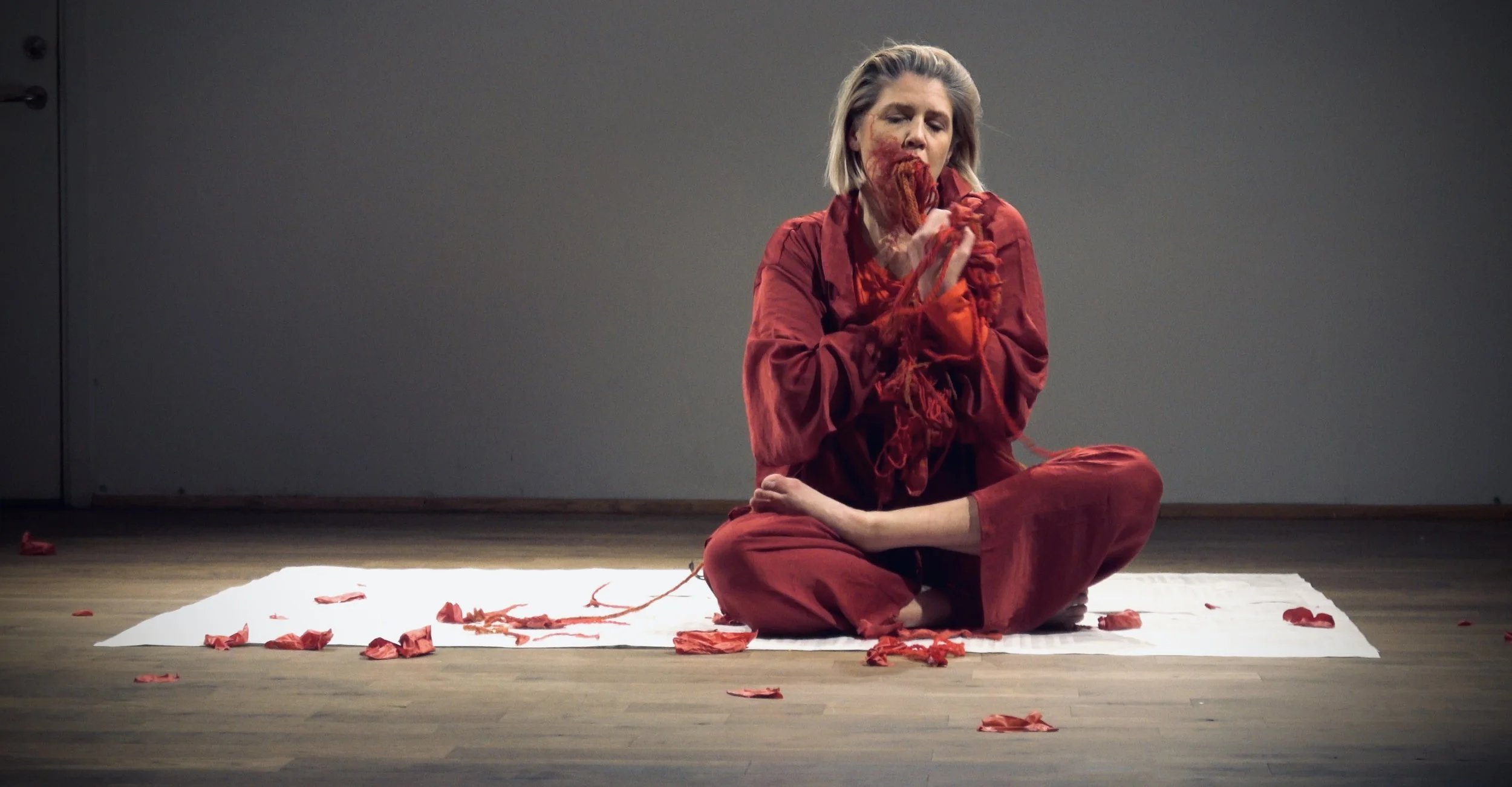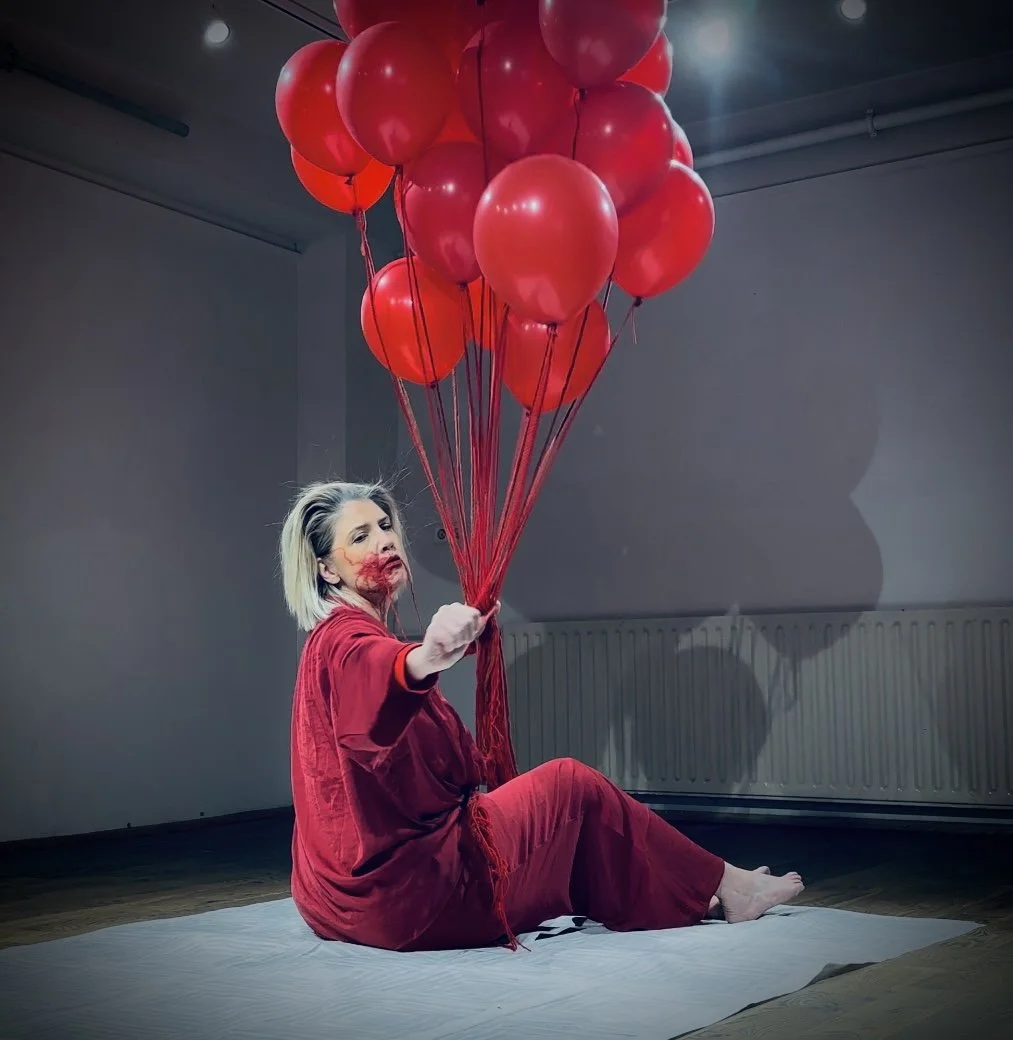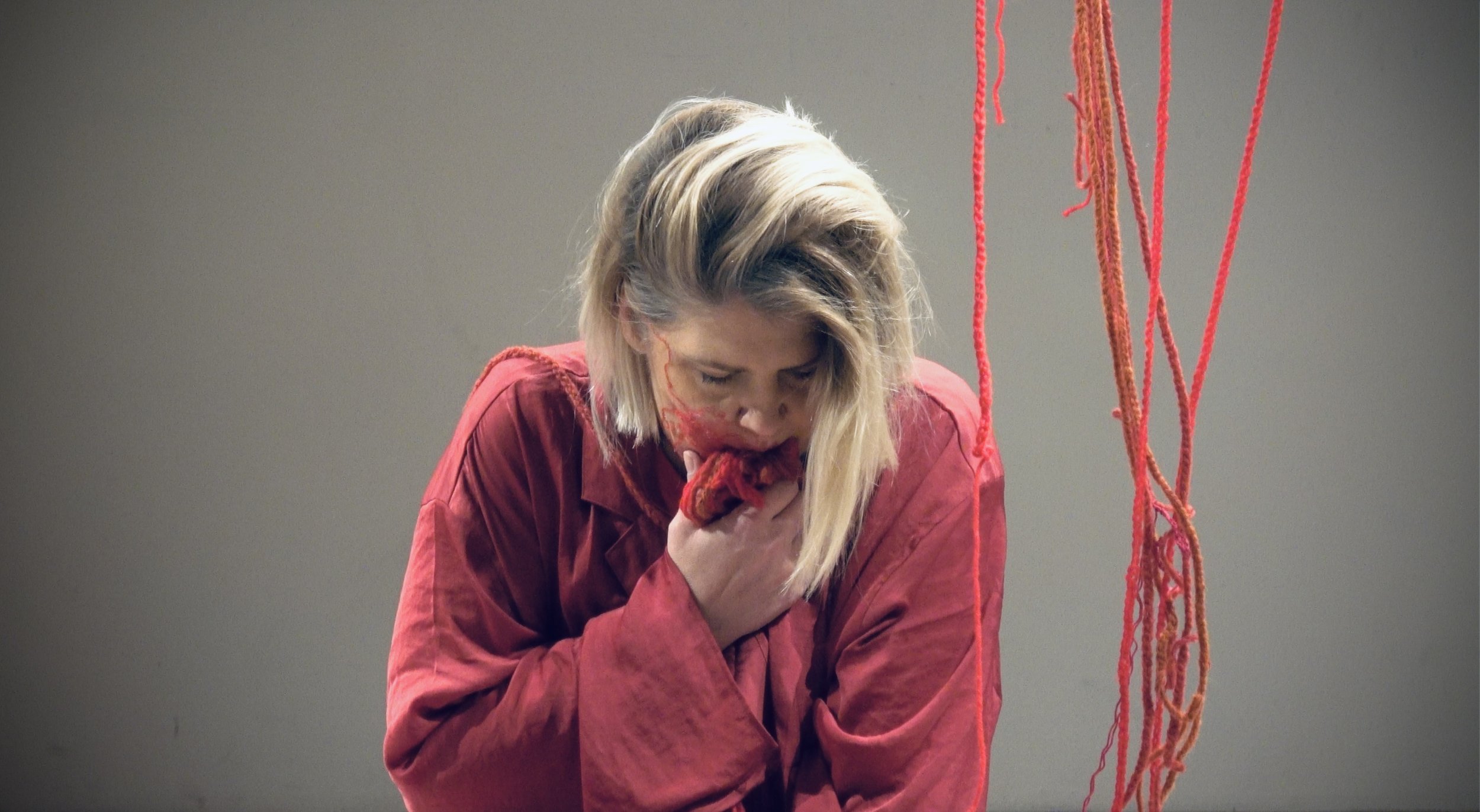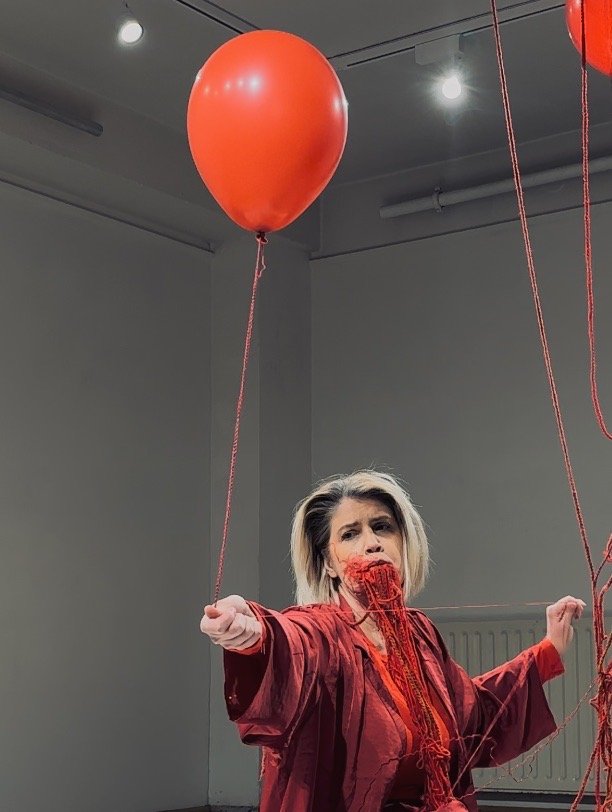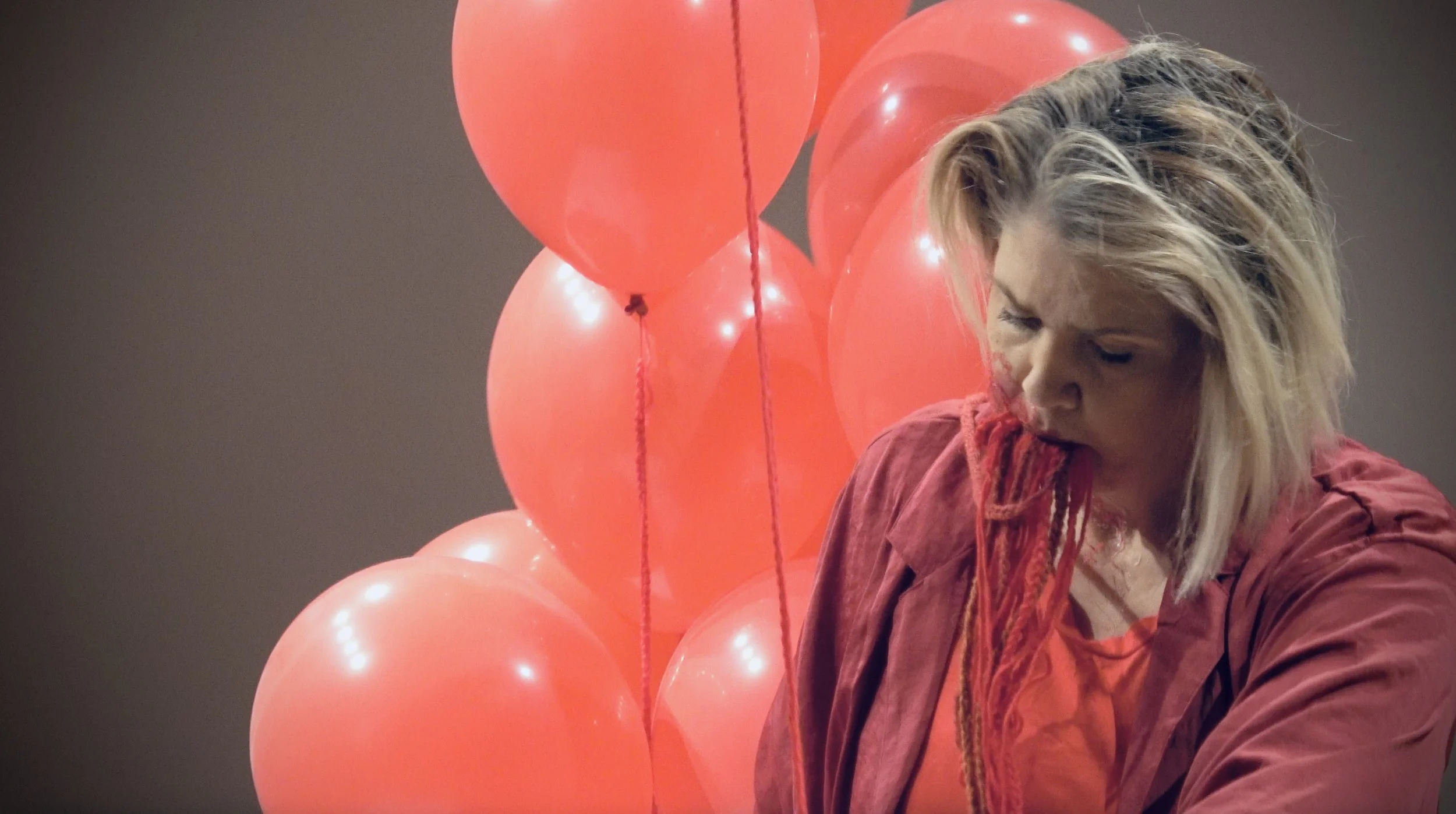to my small hearth, his fire came [draft]
2023-24
Duration 2 hours
performed at Deiglan Gallery, Akureyri, Iceland
developed at Gilfélagið
The current thrust of my performance work aligns fiber arts with contending with complex post-traumatic stress disorder (C-PTSD) and intimate partner violence- diversifying the definition of the term, ‘women’s work.’ The World Health Organization (WHO) reports that one in three women have suffered as victims of intimate partner violence (IPV) (WHO 2021). These staggering statistics demand recalibrating the definition of ‘women’s work’ to include dealing with IPV in all its forms. The term is commonly used in reference to the unpaid labor that a woman performs within the home – housekeeping, child rearing and, domestic arts such as sewing, knitting, crochet and other craft activities.
The delineation of ‘women’s work’ is a patriarchal and capitalist concept meant to maintain men’s superiority over women. This division of labor undervalues domestic labor typically performed by women, enforces lower wages for women (often for equivalent responsibility) and in turn encourages dependence on their partner. However, ‘patriarchy readily accommodates some women into positions of power, provided that the women are male-identified, male-centered and act according to patriarchal values’ (Becker 1999). Ultimately, the sexual division of labor between ‘masculine’ and ‘feminine’ responsibilities equates tasks with value, the ‘feminine’ considered of low value.
Therefore, as women contend with violence in their homes and suffer often without repercussions, as a culture we also undervalue their healing. The work I am looking to present is entitled “to my small hearth, his fire came” and centers on several representations of fiber arts (quilting and crochet) as embodied objects of ongoing labor, ‘women’s work.” This labor includes the contention of “triggers” that unravel years of trauma mitigation, suggesting the non-linear process of healing.
The performance is structured as a repetitive action. The performer is situated on top of a “log cabin” patterned quilt- historically a symbol of security. The quilt is lined with ash meant to imply history– her history, the collective women’s history, an overall purge of pain as the ash consists of burnt journal entries, essays, writing, artwork chronicling her experiences as a victim of violence and those who would like to contribute. The quilt ash is ever-evolving with contributions from people who wish to purge their pain and is evident through the light gossamer fabric is it made of.
The performer sits on top of the quilt and holds onto a bundle of balloons. These balloons are meant to suggest pleasantries– moving on from pain. The tethers are crocheted but unravel from the performer, showing that mending or healing can be unraveled. As the performer looks to remain hold of the balloon, it pops and causes a trigger of past pain. The performer contends with uncontrollable tremors (but safe) evident to the viewer. This cycle of gathering and maintaining control is undone by the triggers- popping of each of the balloons until none remain. The performer gathers all of her labor and leaves the performance space.
References:
Becker, Mary (1999) "‘Patriarchy and inequality: Towards a Substantive Feminism’," University of Chicago Legal Forum: Vol. 1999: Iss. 1(, Article 3). accessed 19 Nov. 2023.
Comanne, Denise [CADTM (2020)]. ‘How Patriarchy and capitalism combine to Aggravate the Oppression of Women’, – CADTM,. https://www.cadtm.org/How-Patriarchy-and-Capitalism-Combine-to-Aggravate-the-Oppression-of-Women,. accessed 19 Nov. 2023.
World Health Organization (WHO) (2021) ‘Violence against women’, www.who.int/news-room/fact-sheets/detail/violence-against-women, 1 March, accessed 8 May 2023.
